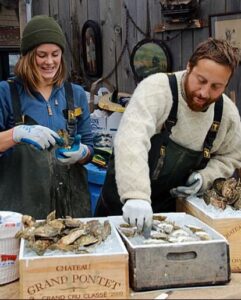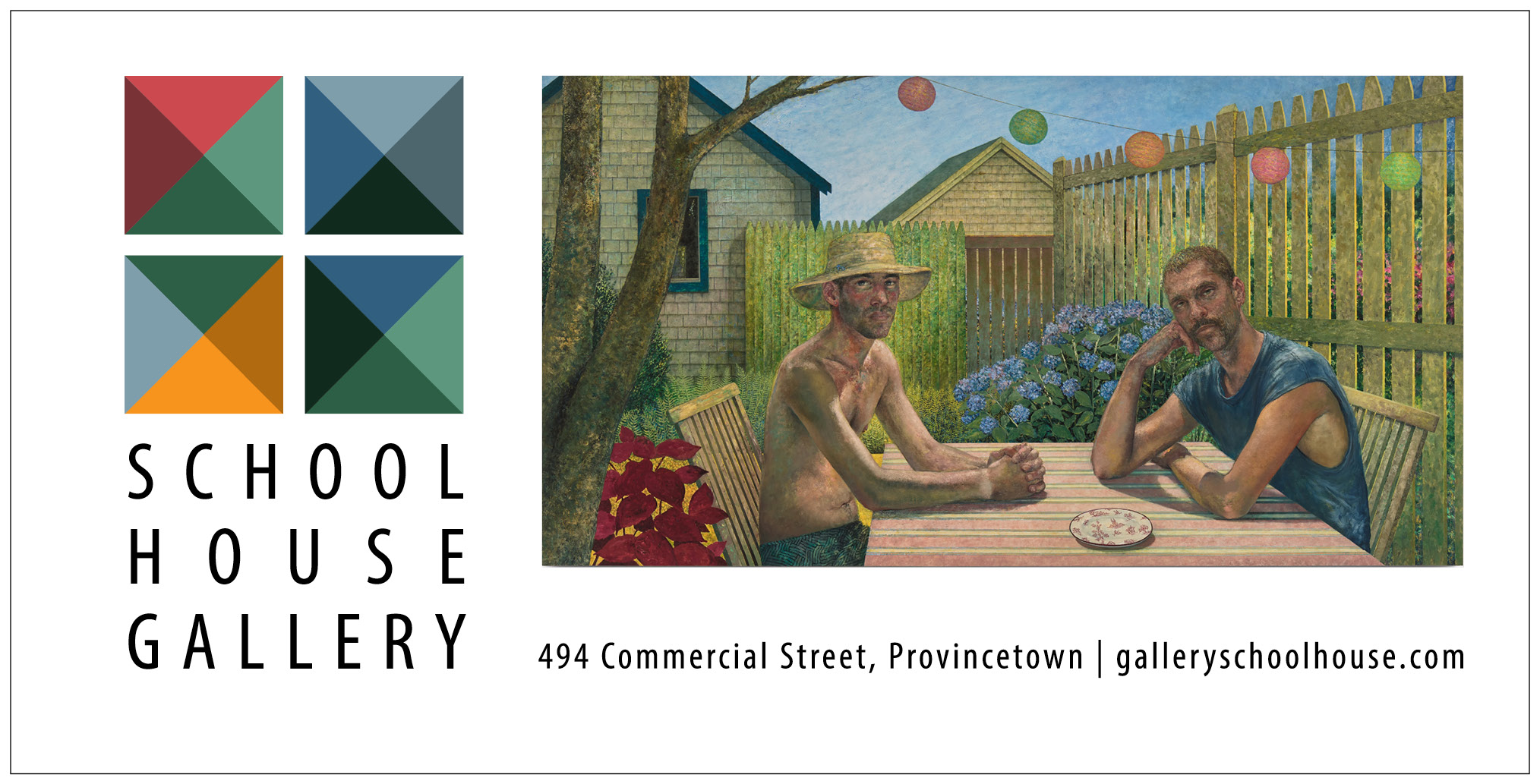WELLFLEET — From his farm, which lies where Loagy Bay meets Blackfish Creek at the end of Old Wharf Road in South Wellfleet, Andrew Jacob sells a catalog of uniquely named oysters. It includes Pony Boy Petites, Golden Gorillas, and Swayze Selects, Jacob’s premium oysters, which are destined for a restaurant where he says the head chef believes Point Break — the thriller in which Patrick Swayze plays the leader of a gang of bank-robbing surfers — is the best movie ever made.

Jacob, who is also an artist, said that while he’s created these brands mostly for fun, he hopes they will grow his business over time. For now, he still sells most of his harvest as Wellfleets. The specialty sales represent only between 10 and 20 percent of his business.
Jacob’s cleverly named oysters are enjoyed at raw bars and delivered directly to consumers by wholesalers like Duxbury-based Island Creek Oysters, which includes in its own marketing materials a brief biography of Jacob and description of his farm, Jacob said. To him, that’s better than ending up on a plate as “just a Wellfleet oyster.”
Jacob is not the only aquaculturist here to have adopted an individualized marketing strategy. The emergence of sub-brands is part of a movement in the oyster world that local growers hope will avoid commoditization — that is, a product distinguishable only by price, not by quality, in the eyes of consumers.
“In the last 20 years, we’ve seen this evolve where now there are farmers who are not only putting the place but how they’re growing them into that story,” said Bill Walton, a former Wellfleet shellfish constable who is now a professor at the Virginia Institute of Marine Science. He sees this as a response to consumer interest in knowing where food comes from. “It’s exactly the same market as wine and microbreweries,” he said.
Jason Weisman, who sells his South Wellfleet bivalves under the name Lucky Lips Oysters, said he uses personalized marketing to “upscale” his oysters and as a way of competing on a basis other than volume. His story, including the way he works his farm with his wife, Elisabeth Salen, is a way to stand out from “the generalized brand of just Wellfleet oysters,” he says.
Weisman says he’s “100-percent focused” on his own brand, for which he selects smaller but deeper-cupped oysters to sell directly, often at events. About 30 percent of his harvest makes the cull, he says; his larger oysters are making it to the national market wholesale simply as “Wellfleets.”
Most markets demand three-inch oysters, Weisman says, and that was long the legal size in Massachusetts, too, but the state does allow harvesting of 2.5-inch oysters as long as they’re farmed, not wild picked.
Jake Puffer also sells a smaller oyster he calls Puffer Petites and markets them through Island Creek. That company in turn tells the story of these particular oysters and of the Puffer family’s shellfishing history on its website.
Like Weisman, Puffer said that while he still feels “lucky to be able to sell under the name of Wellfleet,” having his own sub-brand helps him limit direct competition with other local oyster farmers. Puffer Petites and regular Wellfleets each represent half of his business, with the petites commanding a higher price, he said.
Puffer believes the sub-branding trend has largely been consumer-driven, with raw bars seeking to offer diverse rotations of oysters. And the personal branding makes sense here because of the small-business character of the Wellfleet oyster industry — here people have the freedom to be creative about their marketing.
The trend reaches beyond Wellfleet and Cape Cod, though. Bob Rheault, executive director of the New Jersey-based East Coast Shellfish Growers Association, said he’s advised shellfishermen to develop similar branding techniques as a means of avoiding commoditization since he started his own oyster farm in Rhode Island in 1991.
“We sell them like fine wines,” he said of oysters. “It’s pretty well known that the more you know about a product the more you’re willing to pay for it.”
But Rheault said the effort isn’t for everyone — especially for growers who already enjoy strong historical name recognition like those in Wellfleet. And branding takes effort. Each shellfisherman needs to evaluate whether the work involved will merit the returns, he said, adding, “Let’s face it, a lot of these growers just want to put their head down and grow oysters.”
Longtime Wellfleet shellfisherman Bob Wallace agreed that for most people the scale of their farms makes branding impractical, especially because most wholesalers sell the product under the Wellfleet name anyway.
The Wellfleet Oyster Alliance, a nonprofit that supports the local shellfishing community and organizes the town’s OysterFest, is all about the town’s own brand. But Liz Shook, the head of the organization’s marketing committee, doesn’t think farmers’ personal marketing strategies interfere with that.
Wallace, the shellfisherman, and Walton, the academic, also agreed that the presence of specialty brands in Wellfleet does not add to local competition. In fact, it may do the opposite.
“A rising tide floats all boats,” said Wallace, who recalled the days when branding oysters wasn’t something oystermen thought about.
In the early 1980s, he said, those selling oysters were primarily gathering them in the wild as opposed to cultivating oysters on farms. And while the Wellfleet name was historically strong, the lack of predictability in the harvest made marketing almost impossible.
Consistency has increased as aquacultural techniques developed and hatcheries started to engineer seed, another name for baby oysters. That’s something that happened not just here but around the oyster-growing world. And while that has helped growers in some places differentiate their products, it has also increased competition: global oyster production has increased five times over since 1990, according to a 2020 report by researchers at the School of Natural Resources and Environment at the University of Florida, published in Marine Policy.
Looking ahead, Rheault sees a new marketing trend emerging: the environmental sustainability of oysters, which help purify water by removing excess nitrogen, will be top of mind, he predicted.
But those benefits may need a rebrand: “We call them ecosystem services,” he said. “We need a sexier name, honestly.”



